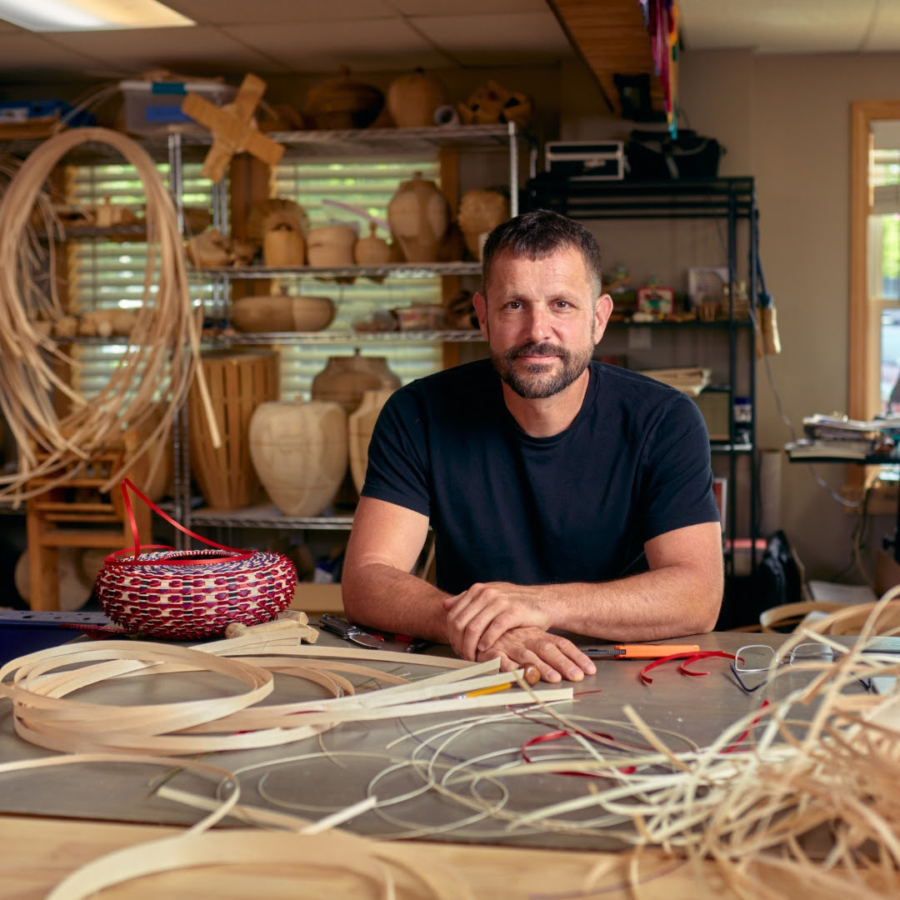June 2016
Download as PDF
View on Artreview
Fifty-two-card pickup! That’s one prank brought to mind by Mungo Thomson’s second solo show at Frank Elbaz, which gathers eight new works: Compositions, seven digital embroideries on linen hanging on the walls, and Composition for Marimba, a limited-edition ios app (all 2016). Whether or not all of them originate from what one might hypothesis to be a frustrating inability on Thomson’s part to execute a perfect riffle shuffle like the true sleight-of-hand artist he wishes he were, one thing at least seems certain: the entire exhibition manifestly deals (with) playing cards, its single allover motif continuing from one work to another. That said, and although the artworld itself is no stranger to gaming and a dealer will always be dealing, the gallery hasn’t actually turned into a casino for this occasion. Rather, in what is presented as a quest for perfect images of randomness, it appears that the Los Angeles-based Thomson has let the cards fall where they may so that he could introduce chance into his art.
This, of course, is the moment when you should rightfully expect me to say something expert about Thomson’s artistic filiation to John Cage, whose heritage he is quick to claim anyway. But employing probability in the face of the audience’s likely knowledge, I’d rather take a chance and beat the odds here too by introducing you to Persi Diaconis, a ‘mathemagician’ (you couldn’t make it up). After all, even Cage is known to have composed with magic squares. A former professional magician and an eminent professor of statistics at Stanford University, Diaconis dedicated his career to the mathematics of shuffling and notably coauthored the 1992 paper ‘Trailing the Dovetail Shuffle to Its Lair’, concluding that a pack of playing cards was only truly random after seven vigorous shuffles. Seven? Without explicitly crediting Diaconis, that is precisely the number of times Thomson shuffled a deck for each Composition in order to knowingly achieve pure mathematical randomisation before throwing the cards onto his studio’s floor and taking a picture of the ‘unique’ pattern thus obtained (statistically speaking, the chances of getting the same one twice are infinitesimally small). Each photograph was them thoroughly translated onto an image on linen through digital embroidery, while the length of the area covered by the cards scattered on the floor strictly determined the dimensions of the final work (ie up to three metres long).
What seems even more random than Diaconis’s mathemagics is how Thomson ended up turning to needlework: ‘a simple, gravity-related observation guided the choice of embroidery: the cards could not be made to hang on a vertical surface without sliding off; therefore they had to be stitched on’, he wrote to the gallery. Ignoring the existence of glue may have been the trickiest trick here. Whereas cardistry required quick dexterity, digital embroidery is painstaking for sure; to make each Composition took up to a week and one million stitches, depending on their complexity. Finally, based on Thomson’s notion to write a score for a 52-key marimba by shuffling a pack – one playing card paired with one note- Composition for Marimba completes the show with piped music, chance-controlled by an ios app. Created with an engineer at MIT, it ensures the continuous random permutation of 52 cards screened on an iPhone whose installation atop a music stand openly refers to Robert Fillou’s ‘Musique Telepathique no.5’ (1976-8). Thanks to the warm, right timbre of the marimba, the ever-changing and staccato result sounds as merry as a pharmaceutical commercial for antidepressants and spreads an enigmatic vibe throughout the exhibition space, the kind that would puzzle the most beautiful mind.



